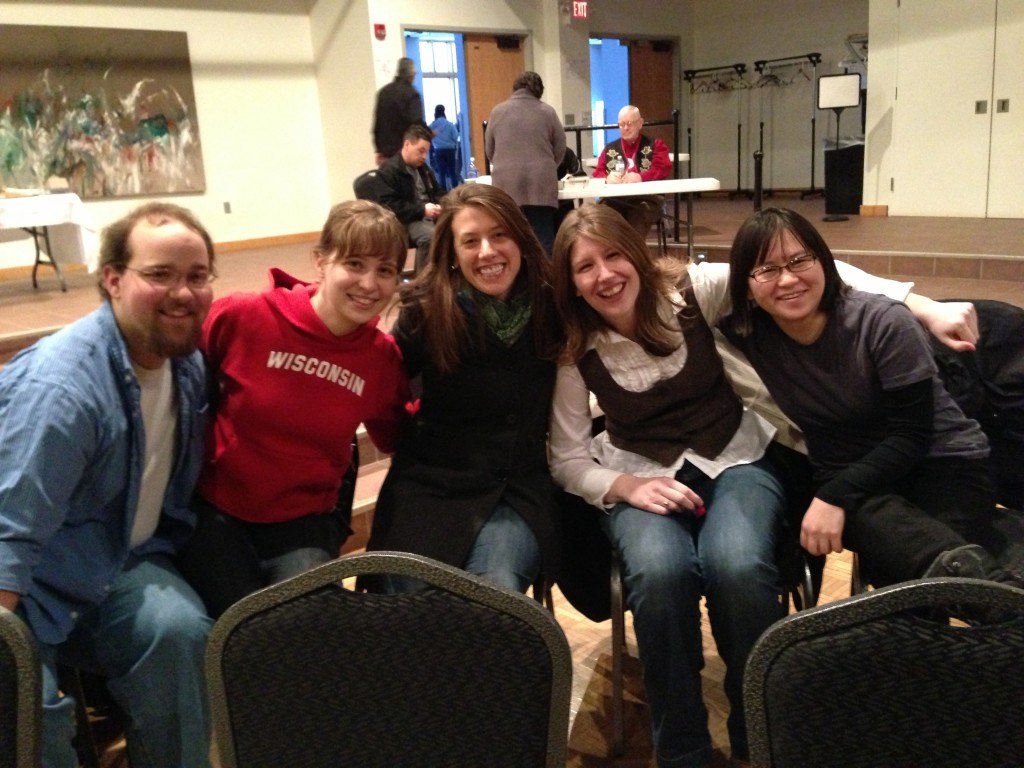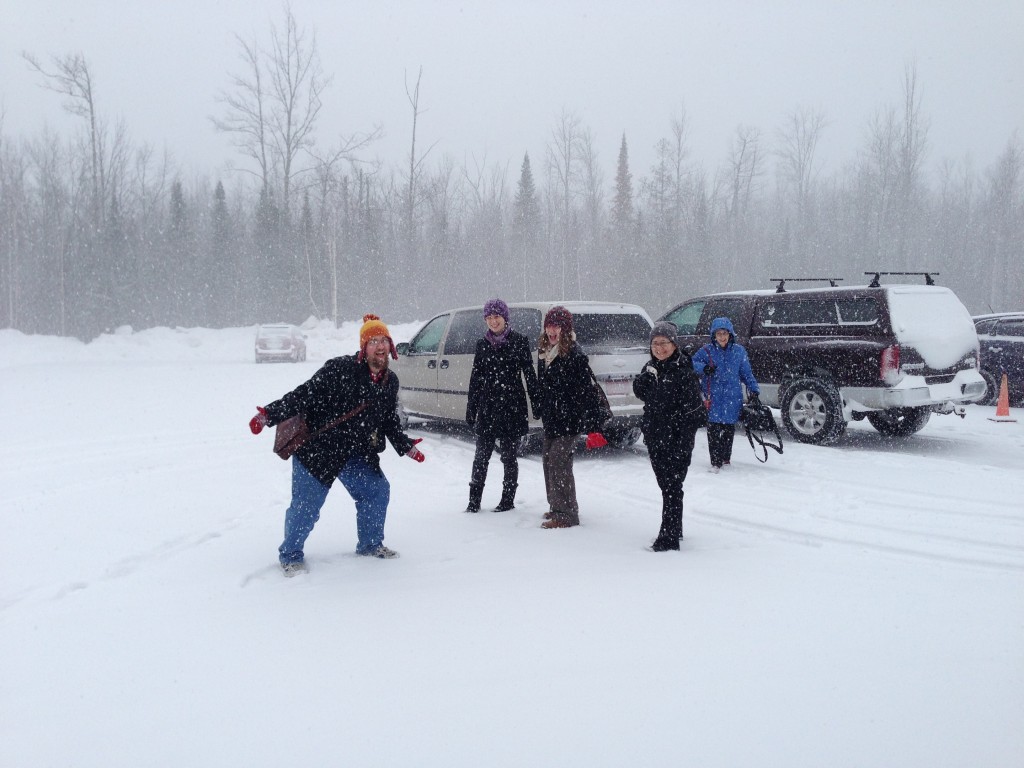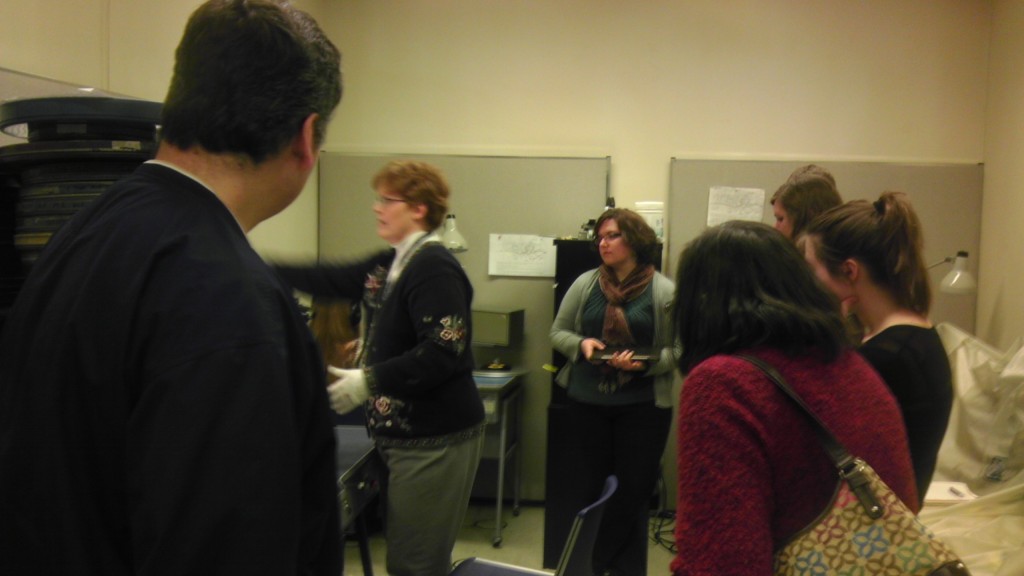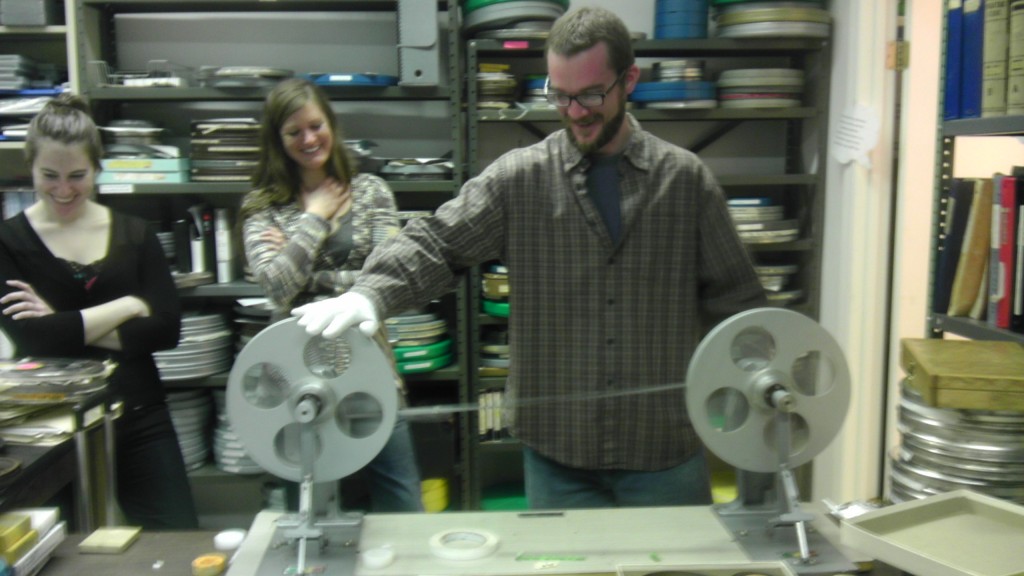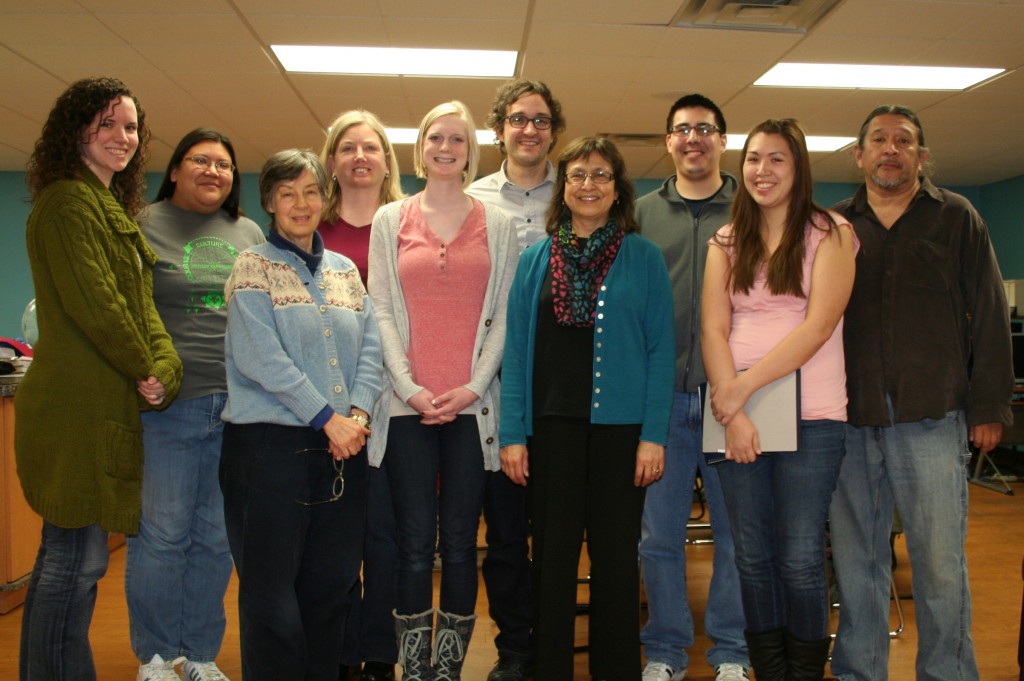One of the themes we’ve discussed in TLAM is the importance of having shared goals[i]. Students and tribal partners should both benefit from working together. As “mutual learners,” it’s important to approach each project with an open heart and mind and only move forward with ideas that benefit us all. Moreover, by establishing trust, we help ensure sustainability.
At this point in the semester, we’ve finally all had a chance to put into practice a few of the concepts we’ve talked about in class. Each TLAM service-learning group has had an opportunity to meet its community partner and begin to move forward with their semester plans. So here’s a brief roundup of the group projects, submitted by Robin Amado, Katelyn Martens, and me, Lotus Norton-Wisla. Keep checking back over the semester to see our progress!
Red Cliff Service-Learning Project (Robin Amado)
The Red Cliff group embarked on an overnight trip February 21 through February 22. Visiting the new Lac du Flambeau dental clinic, that incorporates clan imagery and natural materials,[ii] we also stopped by Northland College to hear three storytellers: Joe Rose, Sr. (Bad River Ojibwe), Diane Bear Defoe (Red Cliff Ojibwe), and Jim Northrup (Fond du Lac Ojibwe). It included traditional, contemporary, and historical stories.
On Friday, meeting with library board at the Early Childhood Center, we discussed lots of business, including the Ginanda Gikendaamin logo, promotional videos, building plan, grant opportunities and website content. Together, we came up with a great plan for the semester.
Oh, and by the way, there was a blizzard that forced us to stay hunkered down at the Legendary Waters casino for most of Friday. But it wasn’t too bad. 3 of 5 came away from the slots ahead!
Oneida Nation Film Preservation Project (Lotus)
Our group’s goal is to help the Oneida Nation organize and preserve their large film collection.
To do that, we’ll identify film that is relevant to the tribe and enter all technical, descriptive, and condition information that we can identify into a spreadsheet that will be accessible by everyone involved in the project.
We had our first meeting (and workshop) on Tuesday, February 26th. We met for lunch with Loretta Metoxen and Reggie Doxtater from the Oneida Nation Cultural Heritage Department, Katie Mullen from the Wisconsin Historical Society, and Mary Huelsbeck of the Wisconsin Center for Film and Theater Research (WCFTR). We chatted about our mutual interests in archives and history, learned a little bit about each other, and, finally, about the dozens of film reels we’ll be working on over the semester.
At WCFTR, Mary taught us all about different kinds of film, common preservation problems, how to wind and unwind film onto a core, and how to use the Steenbeck machines to view film. We viewed a few different reels from the 1960s-70s, including interviews with tribal members, a dramatization of leaving for Indian boarding schools, and footage of a collapsed building.
Loretta identified several people and places quickly as we were watching the films, which made us realize that we will have to figure out a way to take pictures to send to her for identification. Her knowledge of the tribe (people, places, events, traditions) will add so much more meaning to the descriptions of film. While we’ll be reading up on Oneida history, we’ll definitely collaborate with Loretta and Reggie to get the most complete descriptions possible of the film.
We’re all excited to get into some reels of film this week! We’ve got plans to work on the film identification every week through the rest of the semester.
It was wonderful to meet Loretta and Reggie, discuss goals for the project, and learn the skills we’ll need to get started on this film preservation project. We’re also looking forward to visiting the Oneida nation sometime in April!
Ho-Chunk Learning Center Project (Katelyn Martens)
Our group visited the Ho-Chunk House of Wellness last Wednesday (2/27). The group was excited to finally meet the staff and discuss the center’s goals. Since other previous TLAM classes have been working with the center, we weren’t quite sure about our role. Coming back from the trip, we knew the best places to put our effort––and we’ve got lots of ideas on how to accomplish it. The main goal is to develop a kid-friendly and easy to use children’s library.
Here are few of the main topics we discussed with the Learning Center staff:
Collection development:
- Obtain more books for the library
- Make an Amazon wish list and direct people there if they are interested in purchasing books, magazines, and other materials.
- Prioritize purchasing Accelerated Reader and Native American literature books
Instruction:
- Teach the Ho-Chunk Youth Council how to use library thing, basic shelving practices, and basic organization practices in order for them to take ownership of the library collection and help manage the high rate of staff turnover.
Organization:
- Tag the books within LibraryThing with their AR numbers to help teachers choose books for students.
- Make a checkout procedure in order for students to be able to bring books home.
- Create a storytime area in one section of the Learning Center and find better shelving to accommodate the books
We plan to visit frequently, learn more about Ho-Chunk culture, and––alongside the Wellness Center staff and students––familiarize ourselves with LibraryThing.
So all of the groups have gotten off to a great start by meeting tribal partners, sharing goals, engaging in discussion, and learning! Thanks to Robin and Katelyn for their notes and pictures!
-Lotus Norton-Wisla
[i] Walk Softly and Listen Carefully: Building Research Relationships with Tribal Communities (p. 19) http://cnhp.montana.edu/NCAI-WalkSoftly.pdf
[ii] Link to the Wisconsin State Journal article about the construction of the Lac du Flambeau clinic: http://host.madison.com/news/local/on-wisconsin-new-clinic-will-transform-dental-care-in-north/article_c80c78a8-6d63-11e2-a69c-0019bb2963f4.html

